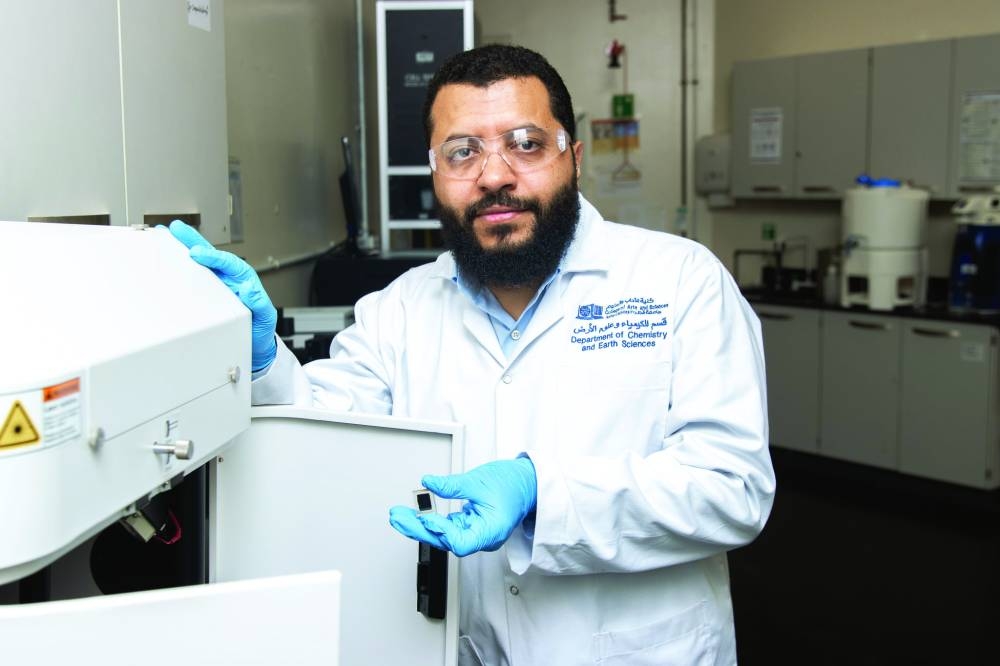Dr Yasser Hassan, assistant professor of chemistry at Qatar University’s (QU), College of Arts and Sciences, has taken steps to unveiling the potential of recently discovered perovskite materials, which offer incredible promise for an array of emergent technologies like efficient optoelectronics and sensors, to name just a few.
“Perovskites could revolutionise how sunlight is harvested, how the world is lit, how radiation is sensed, and how nuclear waste is cleaned,” says Dr Hassan, who has been researching the field for nearly a decade.
Harnessing energy from the sun to generate electricity is costly due to the advanced technologies required, limiting its accessibility to everyone. In reality, the current solar cells technology do not deliver the expected performance, as they fail to convert a significant amount of the energy absorbed. Moreover, the high cost of these cells, which primarily rely on silicon, poses a major barrier, making the cost of solar energy surpass that of other sources such as wind and hydropower.
The Nature Journal study focused on the critical issue of perovskite instability caused by unbounded lead atoms on the material's surface. These atoms are responsible for a phenomenon known as halide segregation, which leads to the degradation of the perovskite structure over time. “Learning from mother nature, particularly how biological systems like the human liver detoxify lead, it was discovered that lead-complexing multidentate ligands, such as ethylenediaminetetraacetic acid and L-glutathione reduced, can 'clean' the perovskite nanocrystal surface,” explains, Dr Hassan.
The team's innovative approach neutralises the surface defects and inhibits halide segregation, thereby increasing the material's photo and chemical stability. The results are excellent, with red electroluminescence peaking at an external quantum efficiency of over 20%. Dr Hassan’s work showcased a route to control surface defect formation and migration, a vital step for achieving band gap stability needed in light-emission applications.
“Studies like this are essential in understanding how perovskites work as a material and how they could be used in everyday life,” says Dr Hassan. His latest findings are set to contribute significantly to the blossoming scientific community engaged in material sciences and energy conversion, and they raise the curtain on a future where the promise of perovskites is not just theoretical but a practical reality. The groundbreaking work done by the research team on perovskites is not just a scientific advancement but a leap toward a sustainable and efficient future.
While there is a lot of progress in the field, innovative ways to accelerate sustainable materials development processes are still in dire need. Over the years, incredible fundamental understandings and obligations have been accumulated by scientists regarding structural and multifunctional hybrid materials such as organic-inorganic composites and finding creative means for synthesising them.

Dr Yasser Hassan
